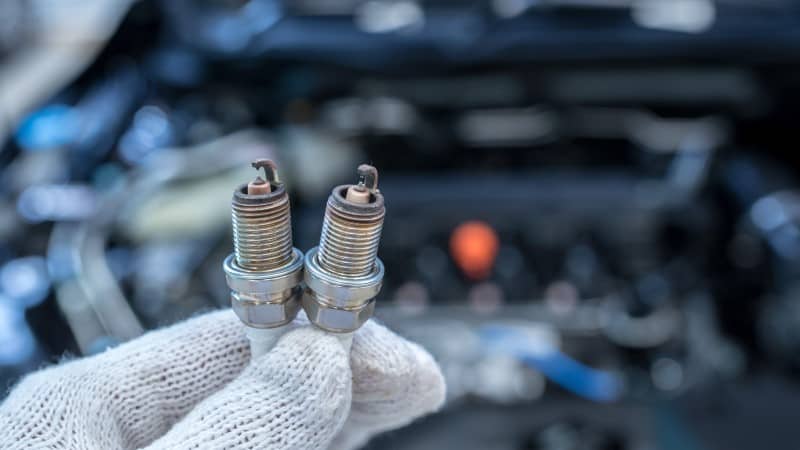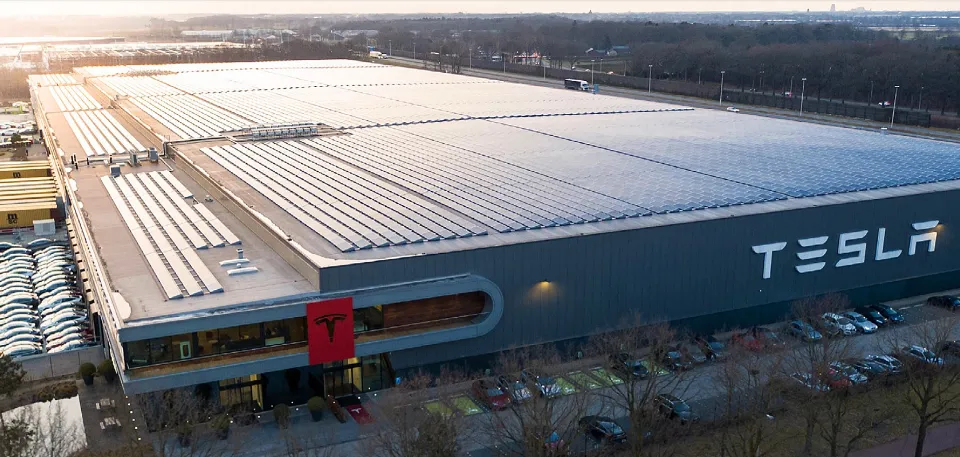Asking, “How many spark plugs does a diesel have?” may sound like a simple question. Actually, there are a few solutions, so it’s not true.
There are no spark plugs in diesel engines. Diesel engines do not use spark plugs to burn their fuel, in contrast to gasoline engines. Instead, the compression in these engines raises the air temperature in the combustion chamber, which causes the diesel fuel to burn quickly when it is introduced.
Please read on for more detailed information.
How Many Spark Plugs Does a Diesel Have?
The simple answer is — none.
Unlike a gasoline engine (petrol engine), a diesel engine doesn’t use any spark plugs.
But, then what burns the fuel inside the combustion chamber of a diesel engine?
To answer this, we need to understand how a diesel and gasoline engine works.
A gasoline or petrol engine usesan ignition coil to transform the battery’s voltage to a higher voltage. From the ignition coil, the high voltage is transferred to a distributor and then to each spark plug via the spark plug wires.
The spark plug creates a tiny electric spark in the spark gap, igniting the air fuel mixture inside the combustion chamber.
Diesel fuel, on the other hand, doesn’t ignite with a spark because of a slightly different combustion process.
Diesel fuel requires air compression to raise the temperature inside the combustion chamber. Diesel immediately ignites when it comes into contact with the compressed air delivered at the end of the compression stroke in conditions of high temperatures.
So, instead of a spark plug, a compression ignition engine (like the diesel engine) uses a heating device called a glow plug.
But what exactly is a glow plug?
Let’s find out.
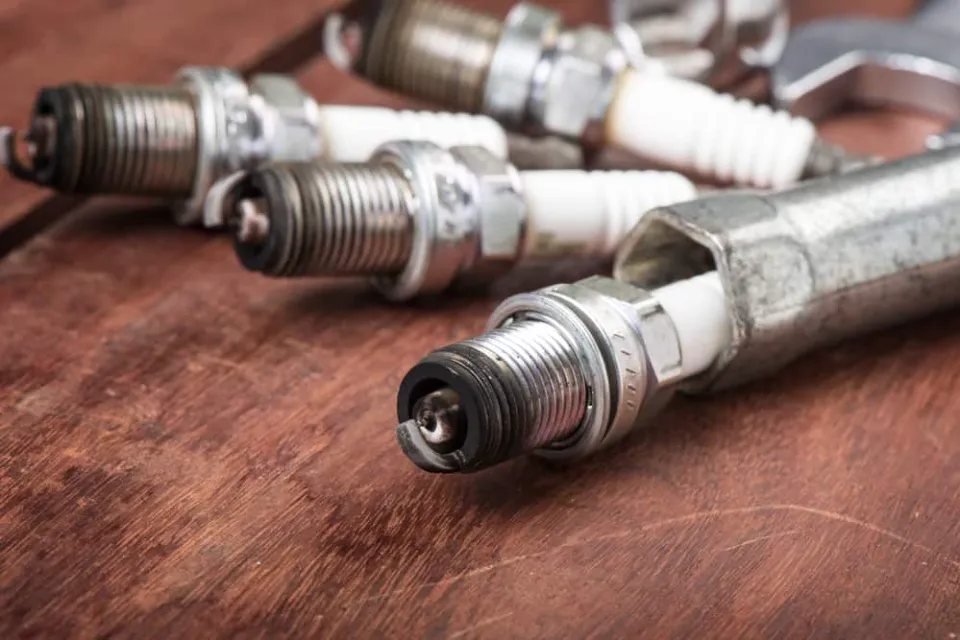
What is a Glow Plug?
A glow plug is similar to a spark plug in the sense that it’s a part of the ignition system of your car’s engine.
However, instead of creating a spark, diesel engines use glow plugs to warm up the combustion chamber and aid ignition, especially in cold weather.
Additionally, a glow plug keeps the cylinder head and block warm enough for a quicker start of the engine.
How does this work?
The air inside the internal combustion engine experiences intense compression when the ignition of your diesel vehicle is turned on. The resulting pressure forces the fuel injector to release diesel inside the chamber, creating an air fuel mixture.
Meanwhile, the glow plug heats up to warm up the combustion chamber. The air-fuel mixture ignites when the chamber is hot enough and is under high pressure, which starts the engine.
This type of combustion may seem to take a long time, but a glow plug in modern diesel engines can reach a heat range of up to 1,000℃ in less than 2 seconds.
Glow plugs operate in three phases:
- Pre-Heating: They warm up the combustion unit to help start the engine quickly.
- Temperature Maintenance: Throughout the combustion process, they maintain ideal heat conditions.
- Post-Heating: Once the engine is running, they maintain a constant temperature in the cylinder block and head.
Most diesel engines run on one glow plug per engine cylinder. This implies that a four-cylinder engine will have four glow plugs, a six-cylinder diesel engine will have six plugs, and a V8 engine will have eight glow plugs.
Now, when it comes to selecting a glow plug for your vehicle, you do have a couple of options.
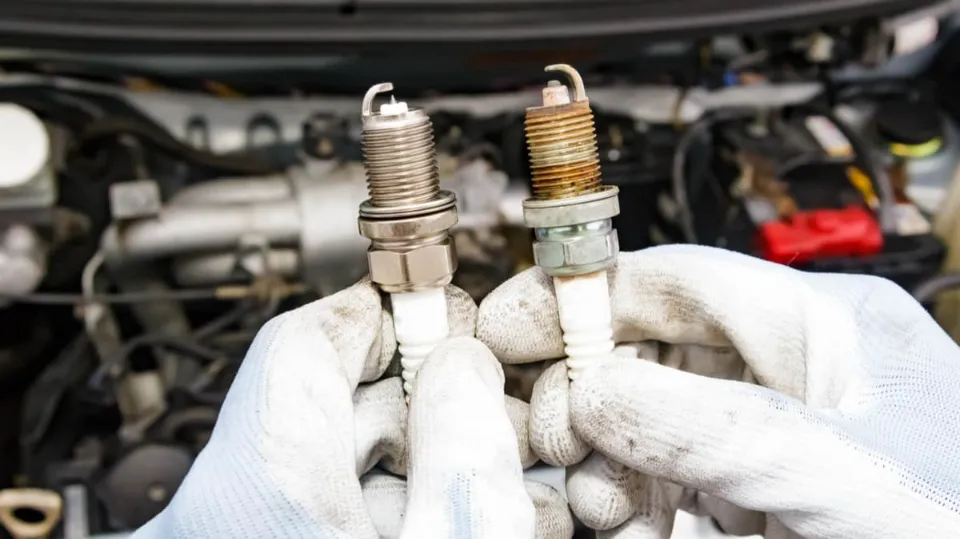
What Are the Different Types of Glow Plugs?
Here are the three types of glow plugs available in the market:
Steel Glow Plugs
Steel glow plugs are the standard and the cheapest type available. Because they’re made of steel, they can take longer to heat up the fuel and the internal combustion engine in colder climates.
However, a steel plug is a good choice if you don’t drive your diesel car very often and your area has moderate temperatures.
Ceramic Glow Plugs
Ceramic glow plugs are more expensive than steel plugs. They can produce consistent heat and warm up more quickly thanks to the ceramic material.
Ceramic glow plugs can also reach higher temperatures (up to 1,300°C), making them perfect for colder climates.
Pressure Sensor Glow Plugs
Pressure sensor glow plugs are the most expensive type available. They help warm up the engine and give you accurate readings about compression levels inside the engine cylinder.
They inform the vehicle’s ECU to change the compressed air levels or alert the driver through warning lights when the air pressure inside the cylinder is low. A diesel engine’s owner can use this to gauge how effectively the fuel-air mixture is burned.
The fuel economy, fuel efficiency, and exhaust emissions of your car can all be controlled with these plugs, even though they are more expensive.
Next, let’s talk about a few questions regarding glow plugs and spark plugs.

How Do Glow Plugs Work in a Diesel Engine?
To make a glow plug, heating coils are encased in a metal tube. A ceramic powder that serves as an electrical insulator is then poured into the tube. Glow plugs may reach temperatures of up to 1000°C in just a few seconds when powered by the vehicle’s battery.
There are also ceramic glow plugs that are more expensive and more effective than metal-encased glow plugs. The ceramic helps the glow plug heat up considerably more quickly. Additionally, it is more durable than metal glow plugs.
In addition to heating the diesel fuel, the glow plugs also heat other materials. Additionally, it helps to warm up the entire engine to ensure proper performance right away.
You may become more technical about the workings of a Glow Plug by looking at its three phases:
Engine Start
Glow plugs quickly heat up during this period to aid in starting the engine. The fuel injector blows diesel fuel atomized across the glow plug when it is hot. After then, the temperature will rise sufficiently enough that the pressured air in the chamber may easily ignite.
Continuous Heat
The diesel fuel will properly ignite inside the combustion chamber if the glow plugs are kept at a constant temperature. They will also continue to run for a dozen or more engine cycles in order to verify that the engine started properly.
After Start
To continue the combustion process after the engine has been started, the glow plugs must remain on for a short while longer. To lessen the likelihood that the engine will shut down before reaching its normal operating temperature, they will then continue heating the fuel for a little while longer.
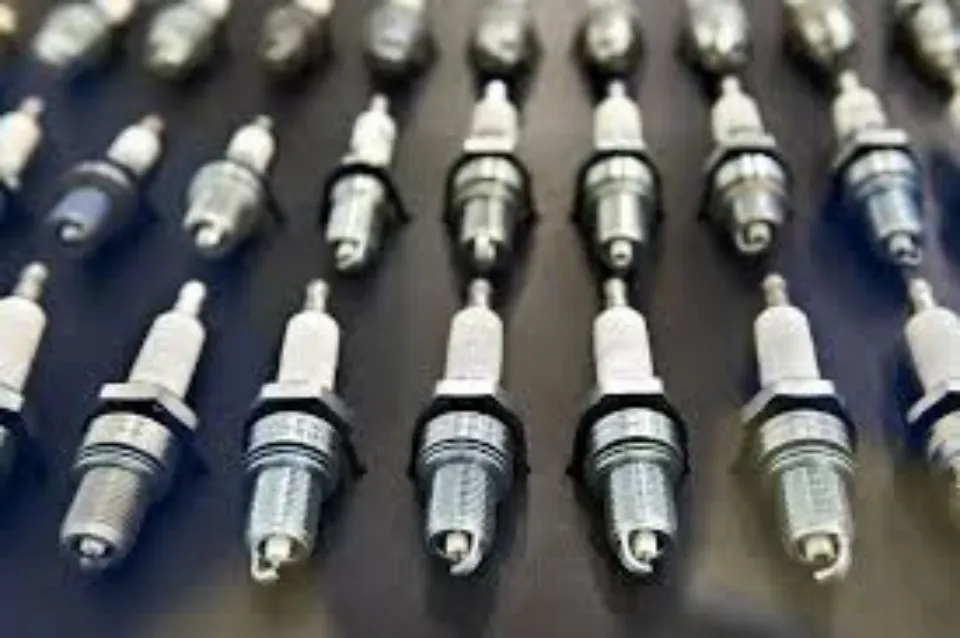
How Often Do You Need to Change Glow Plugs?
Being a car owner means that you must regularly maintain your engine.
Your engine can last for years if you maintain it regularly.
Part of your maintenance routine should be the replacement of your glow plugs.
It’s not surprising that they begin to degrade over time given that their primary function is to produce heat.
Your vehicle’s condition will deteriorate more quickly the more you use it.
Glow plugs typically function at their peak efficiency for 100,000 miles before degrading or breaking.
Since 12,000 miles is the recommended interval for auto maintenance, most mechanics will advise checking your glow plugs at every 12,000 miles.
However, you should change all of your glow plugs by 100,000 miles.
Every cylinder of your engine will continue to run effectively if you replace them all at once.
Keep in mind that even one malfunctioning glow plug can have an impact on the performance of your entire engine.
To make life easier, it’s a good idea to replace all of your spark plugs or glow plugs at the same time.
Frequently Asked Questions
What Do Diesel Engines Use Instead of Spark Plugs?
Spark plugs are not used in diesel engines, as was previously stated. Glow plugs are used instead in diesel engines. Because gasoline burns differently from diesel, diesel engines don’t need spark plugs. Diesel fuel differs from conventional gas in terms of its volatility and ignition point.
Diesel is turned into a mist due to the piston design of the diesel engine and the heated chamber created by the glow plugs. The mist’s increased volatility results in an explosion that ignites the combustion chamber more effectively.
Will a Diesel Engine Start Without Glow Plugs?
Due to the lack of compression, your diesel engine won’t start without glow plugs. Glow plugs provide a specific compression ratio that generates enough heat to atomize the diesel fuel. Glow plugs can be used as starting aids. A diesel engine can still start even with damaged glow plugs, though.
When Should You Change Your Glow Plugs?
Glow plug maintenance is just as important for diesel engine upkeep as spark plug replacement. To ensure optimal performance, make sure your glow plugs are inspected at around 12,000 miles of a tune-up. Glow plugs typically last for more than 100,000 miles.
Summary: How Many Spark Plugs Does a Diesel Have?
Diesel engines don’t have spark plugs. Diesel engines don’t burn fuel with spark plugs like gasoline engines do. In these engines, compression raises the temperature of the air in the combustion chamber, which causes the diesel to burn quickly when it is introduced.
Many people are aware of how diesel engines operate, which is distinct from how gasoline engines do and does not require a spark plug. But not many know that they actually have an alternative to the spark plug, the glow plug.
Do you know what a glow plug is? And do you think it is important for the diesel engine to function properly?
If you have any questions, please leave a comment. KV Auto tries to give you the best car industry information. Thank you for reading.

